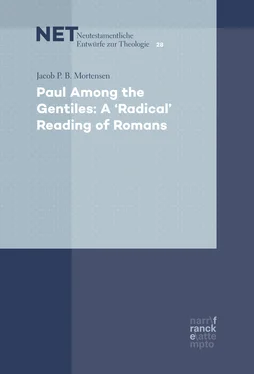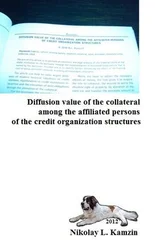The apparent reason for this shortcoming is that no one seems to believe that Paul addresses the same person in 2:1 and 2:17.8 However, the important point to maintain is that the literary theory of προσωποποιία firmly states that the person presented as speaking ‘in-character’ must be consistent throughout the discourse, not only in the actual speech-in-character, but also in the entire discourse wherein he appears. But this principle is quite difficult to maintain if one believes that Paul changes interlocutor in the middle of his discourse ( e.g. 2:17), as do most scholars. If Paul generally outlines the Gentile situation in 1:18–32, then turns to a (fictive) Gentile interlocutor in 2:1–16, only to change interlocutor in 2:17, and at some undefined point return to the Gentile interlocutor, it becomes quite difficult to determine the identity of the character speaking with Paul in 3:1–9, 4:1–9, 6:1, 6:15, 7:7–25, 8:31, 9:1, 9:14, 9:19, and further on (not to mention the occasion behind the dialogue, and the social position of the person uttering it). For instance, according to Stanley Stowers, Paul addresses an imaginary Gentile in 2:1–16, a Jewish teacher of Gentiles in 2:17–29, 3:1–9, and 3:27–4:2,9 but the focus of the dialogue throughout chapters 1–4 is the Gentile people.10 Also, Paul’s dialogue with the Jewish teacher of Gentiles does not continue in chapters 5–8, where, for the first time since the prescript, Paul speaks directly and explicitly to the encoded readers, who are Gentiles. And in 7:7–8:2, Paul presents ‘a brilliant display of speech-in-character’ by a conflicted Gentile.11 So even in Stowers’ very elaborate and significant interpretation, the identity of the interlocutor shifts, and sometimes even interferes with the encoded reader/audience directly addressed, and by implication, also with the occasion behind the discourse. This is a major weakness in Stowers’ (and others’) presentation of the discourse in Romans 1–11, and it is this problem I intend to address by way of προσωποποιία. Consequently, if Paul outlines the Gentile situation in 1:18–32, then turns to a fictive Gentile interlocutor in 2:1–16, then further qualifies the same Gentile interlocutor in 2:17ff. as a Gentile wanting or pretending to be a Jew ( i.e. a proselyte or a God-fearer), then the identity of the speaker in 3:1–9, 3:27–4:2, 6:1, 6:15, 7:7–25, 8:31, 9:1, 9:14, 9:19 and further on is clearly conveyed as the same fictive Gentile interlocutor addressed by Paul throughout. This means that if it is possible to prove a calibration or connection of the diatribal features with the theory of προσωποποιία, not only does the (formerly mysterious) identity of the speaker of Rom 7:7–25 reveal itself, but the unity, cohesion and continuity of Romans 1–11 becomes clear and straightforward. So, let us continue to look more closely at προσωποποιία.
According to Theon, προσωποποιία includes cases where one invents the ἦθος (the character; by means of words) of a known person (πρόσωπον), and also of cases where one invents both the ἦθος and the person.1 This means that an author could use the device of προσωποποιία for an already known and famous person (as in the Heroides ), or the author could invent a fictive person with a consistent character, for example, a certain type of person (for instance a Laconian, an Attic, or a jewish ish Gentile). As stated above, προσωποποιία concerns actual speech. However, both Theon and Quintilian state that we are justified in inventing either the character (ἦθος) or the person of the one who actually delivers a ‘speech-in-character’. This means that before the ‘actual’ speech-in-character takes place, the author is allowed to invent and describe the person, for instance through a narrative or an address by another person. This helps the reader to more clearly perceive the character of the invented person. Quintilian writes:
A bolder form of figure, which in Cicero’s opinion [ De Or. 25.85] demands greater effort, is impersonation, or προσωποποιία. This is a device which lends wonderful variety and animation to oratory. By this means we display the inner thoughts of our adversaries as though they were talking with themselves (but we shall only carry conviction if we represent them as uttering what they may reasonably be supposed to have had in their minds); or without sacrifice of credibility we may introduce conversations between ourselves and others, or of others among themselves, and put words of advice, reproach, complaint, praise or pity into the mouths of appropriate persons. Nay, we are even allowed in this form of speech to bring down the gods from heaven and raise the dead, while cities and peoples ( populique ) may find a voice.2
This excerpt raises at least three important points. First, what Quintilian argues is a direct extension of Theon’s guidelines in the Progymnasmata . There is no sense in arguing that, since Institutio Oratia was a third level curriculum and the Progymnasmata was a second level curriculum, they differ in their guidelines on προσωποποιία. On the contrary, from what we know about ancient literate education3 the second level curriculum would be completely incorporated into the third level, which would involve a more elaborate and technical presentation. So what we find in the Progymnasmata could (potentially) be further illuminated through the Institutio Oratia , but could not be used to question the account in the Progymnasmata .
The second point is that Quintilian explicitly states that the gods, the dead, a city, or an entire people can find a voice through προσωποποιία. This means that Paul would not merely be justified in his use of προσωποποιία in his presentation of a dialogue with an imaginary Gentile who represents all the Gentiles who want to become or appear Jewish (or jewish ish ). He would actually be precisely following the literary guidelines for using προσωποποιία in a discourse, that is, a textbook example. The characterization of this jewish ish Gentile would match the actual ones Paul had met throughout his mission and committed himself to as a (Jewish) apostle to the Gentiles, and probably also the ones he had read about in other contemporary Jewish literature (for instance, Wisdom of Solomon or Joseph and Aseneth ), and the LXX (e.g. Gen 18–20). Hence, it would make perfect sense that Paul knew exactly how to characterize this kind of person, and could guide him through the difficulties and pitfalls of affiliating himself with Judaism and the Jewish Messiah.
The third point raised by the foregoing quotation is that the quotation from Quintilian confirms that dialogical features should be considered forms of προσωποποιία. This would have implications for the significance of Paul’s possible application of the dialogical diatribe. If an author presents a dialogue with a consistent characterization, it should be considered a form of προσωποποιία. And Quintilian firmly emphasizes that in the discourse, what the character says must be plausible. Also, the variety of forms of προσωποποιία presented by Quintilian clearly testifies to the fact that not only should the first-person speech in Rom 7:7–25 be considered speech-in-character (even though it obviously is actual ‘speech-in-character’), but also the apostrophe in 2:1ff., and the dialogue in 3:1–9, 3:27–4:2, and further on. Quintilian places all the kinds of speech involving imaginary interlocutors under the heading of προσωποποιία. Thus, according to Quintilian’s categories, almost all the dialogical techniques characteristic of the so-called diatribe would be types of προσωποποιία. To further substantiate this point, Quintilian treats ‘apostrophe’ together with, or as a sub-element of, προσωποποιία in Institutio Oratia 9.2.38. Consequently, to state that Paul initiates an apostrophe in 2:1 based on the personification of the pretentious (Gentile) person in 1:18–32 would be to state that Paul applies προσωποποιία in 2:1ff. Thus, the line between diatribe and προσωποποιία is barely definable.
Читать дальше












